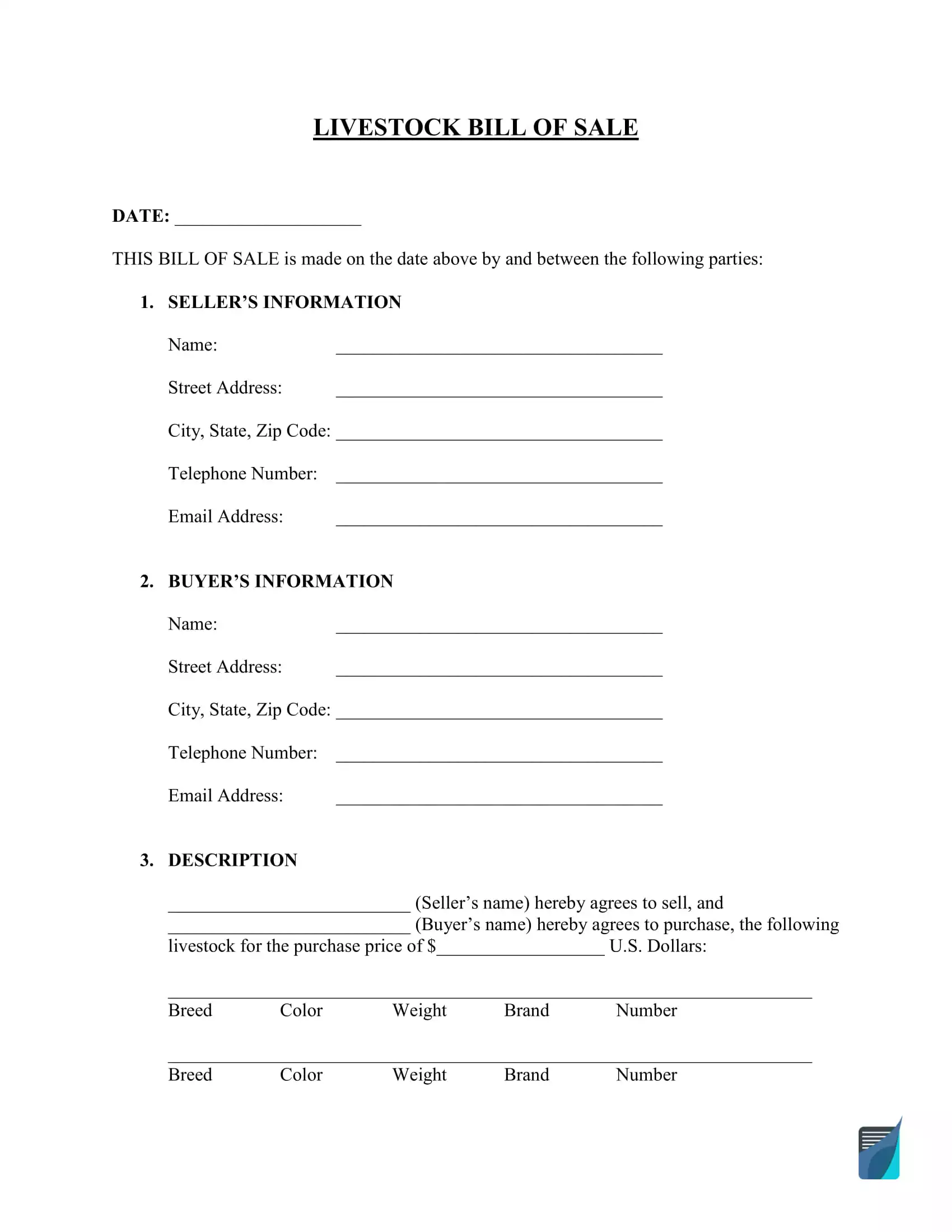Livestock Bill of Sale Form
A livestock bill of sale is a document used during a sale or purchase of farm animals. These include chicken, cows, sheep, pigs, horses, and other domestic animals. When the buyer and seller come to a consensus, the bill of sale document will act as a binding contract of the deal. It provides evidence that the transfer will occur at a particular date, the cost of the livestock, as well as the payment details.
The purchase agreement allows the seller to carry out a health inspection with a professional veterinary officer to ascertain the current state of the animal. This typically happens after signing the agreement or before the sale date.
If the animal is in good condition, the deal will be made as per the agreement and payments finalized in the presence of witnesses and a legal representative.
Why Use a Livestock Bill of Sale?
Whether you want to sell or buy a goat or any other animal, it is paramount to use a livestock bill of sale. The document protects the interests of both parties in the agreement in case of fallout. It is a binding form that shows proof of transaction, date of sale, names, and signatures of all parties involved. Hence, it compels each person to keep their end of the deal without malice. It also prevents liability issues from the new owner after the animal has been sold.
The details on the form allow the transaction to happen seamlessly without any issues. After the buyer verifies that the livestock is indeed what is in the agreement, the transfer can occur without either party feeling shortchanged.
Livestock Bill of Sale Form Details
| Document Name | Livestock Bill of Sale Form |
| Other Names | Cattle Bill of Sale, Animal Bill of Sale |
| Avg. Time to Fill Out | 15 minutes |
| # of Fillable Fields | 86 |
| Available Formats | Adobe PDF; Microsoft Word |
Can I Create a Livestock Bill of Sale Online?
It is challenging to compose a livestock bill of sale, especially for first-timers. With all of the legal jargon and contract terminologies, you may be confused about where to start. That is why we offer customized bill of sale templates on our website. You can download it for free and tailor it according to your sales needs, or you can use the form builder to fill in the details and generate a highly customized form within no time.
You also have an option to contact lawyers on how to conduct your sale or purchase. Although it is costly, you will get a high-quality document. Each law firm has its price, and if you are on a budget, you will have to scout for a reasonable deal. It might be cumbersome, plus you will have to reveal too much information such as your physical address and other private details.
So, take advantage of the online livestock bill of sale and proceed to look for prospective buyers.
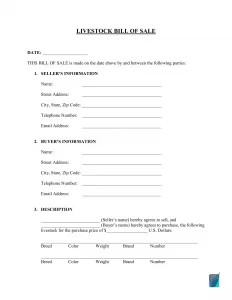
Other Bill of Sale Forms for Animals
How Do I Sell Livestock?
Whether you want to put up your livestock for sale on a public auction or by word of mouth, and you have no idea how to fill out an animal bill of sale, follow our step by step guide below:
Step 1. Describe the Livestock

Make a detailed description of the animal. Include the type of breed, the color, weight, vaccination history, and health details, plus any additional information that a prospective buyer needs to know. Take good pictures, if possible, and be honest about the condition of the livestock.
Step 2. Set the Price of Your Animals
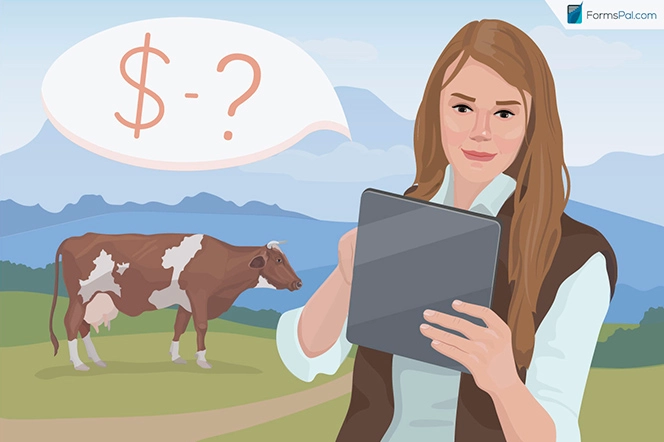
Come up with a reasonable price for the animal considering the current market price. Do not exaggerate since you might chase away prospective buyers.
Step 3. Offer Your Livestock for Sale
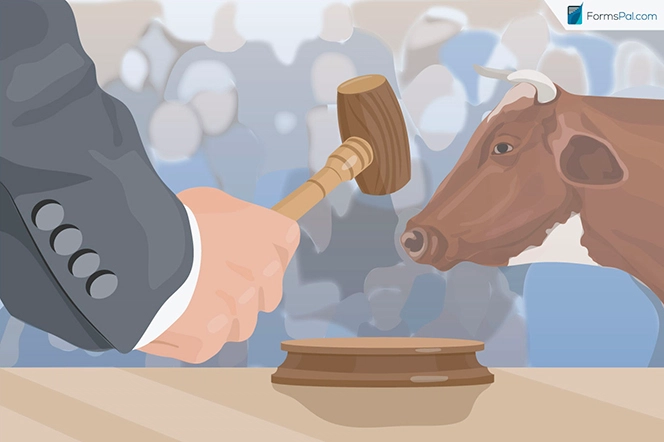
Here, you need to know where and how you will sell your animal. Is it a public auction, private farm sale, or a local arrangement with the buyer? Whatever your decision, ensure that your bill of sale is ready.
Step 4. Meet With Potential Buyers
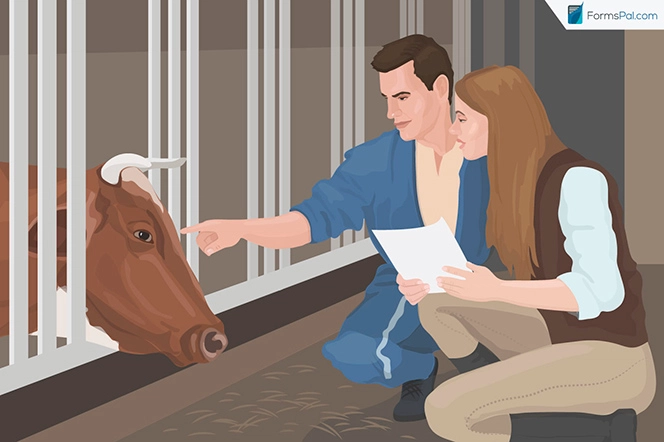
Arrange an official meeting with the prospective buyer and proceed with negotiations. If there is a consensus, plan for an inspection after the signing the livestock bill of sale below.
Step 5. Complete a Livestock Bill of Sale Template
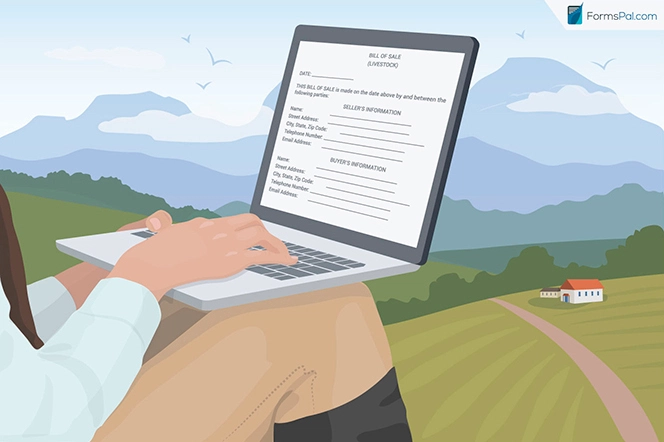
Here are the details in the bill of sale:
Sale Date
- Buyer’s full name, physical, and email address.
- Seller’s full name, physical, and email address.
- Purchase cost
- Livestock description
- Number of animals
- Color
- Breed
- Weight
- Brand
- Health details
- Vaccination information
- Payment details
- Buyer’s and seller’s signatures and names
- Signing date
- Witness(es) signature(s)
- Notary acknowledgment (if relevant)
You can get a certificate of acknowledgment from a legal representative as insurance of the new ownership.
How to write a Livestock Bill of Sale?
The completing guide is intended around the bill of sale for livestock template created by our company. Nonetheless, you should opt for the official document when it’s available from your local authorities.
Step 1: Specify the document’s creation date.

Step 2: Provide the particulars of each party (purchaser and seller):
- Full legal name
- Street address
- City
- State
- Zipcode
- Phone
- Email

Step 3: Enter the detailed information about the livestock you’re selling:
- Breed
- Colorl
- Weight
- Brand
- Number

Step 4: Indicate the transaction method and total price.
Enter the sale date and write the overall amount that must be paid for the livestock. You must also mark the sale method the purchaser will use:
- The whole sum straight away. Absolutely nothing hard here: the buyer pays the whole sum in one payment and has the motor vehicle delivered to them within a day.
- In installments. Using this method, you must indicate the dates when the buyer has to deliver the first and the last payments, along with their amounts.
The next step is choosing the kind of payment:
- Cash
- Check
- Cashier’s cheque
- Money order
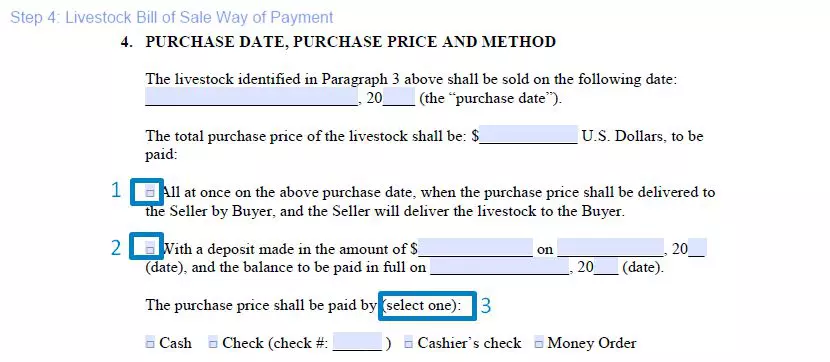
Step 5: Livestock Health Representations
Read and check all that apply
- Livestock is being purchased “as in” basis with no health check or vet records
- The Seller has provided the Buyer with all veterinary records and the Buyer has had an opportunity to inspect them
- Buyer has the right to have the horse inspected by a veterinarian within a determined number of days. If the health of the livestock, determined by the veterinarian, is poor then the seller has the right to a full refund and reject the sale
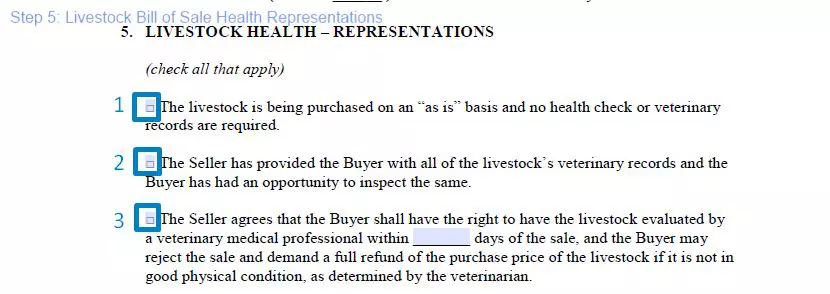
Step 6: Read the miscellaneous provisions.
This provision points that the seller is the owner and that there are no outstanding liens or debts of any kind on the animals. It also states that the information is filled out as accurately and to the best of the seller’s knowledge.
This provision points that the buyer is now fully responsible for any and all future activities of the livestock.
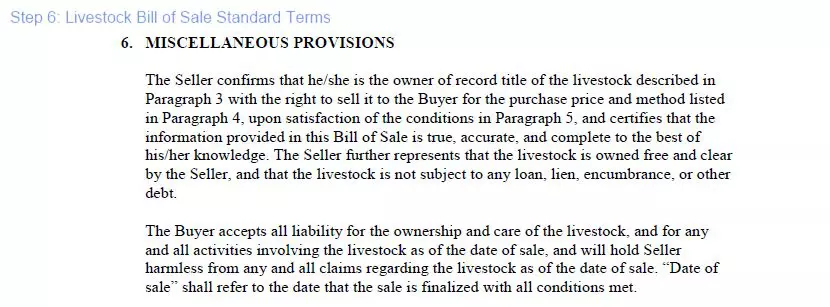
Step 7: Place your signature(s) in the corresponding fields.
The buyer is generally not requested to sign the form. Nonetheless, it’s recommended to have the bill of sale signed by all parties. You could also have one or several witnesses confirm the transaction.
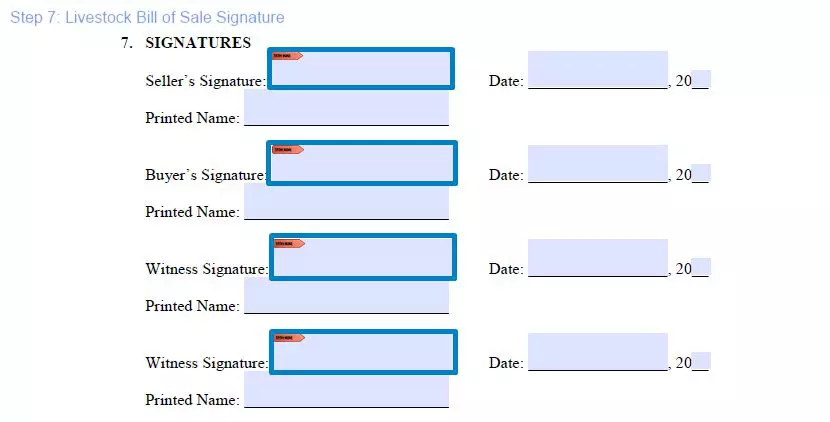
Step 8: Have a notary public certify the form
In this way, you’ll have even more legal protection. But, this is normally entirely elective.


